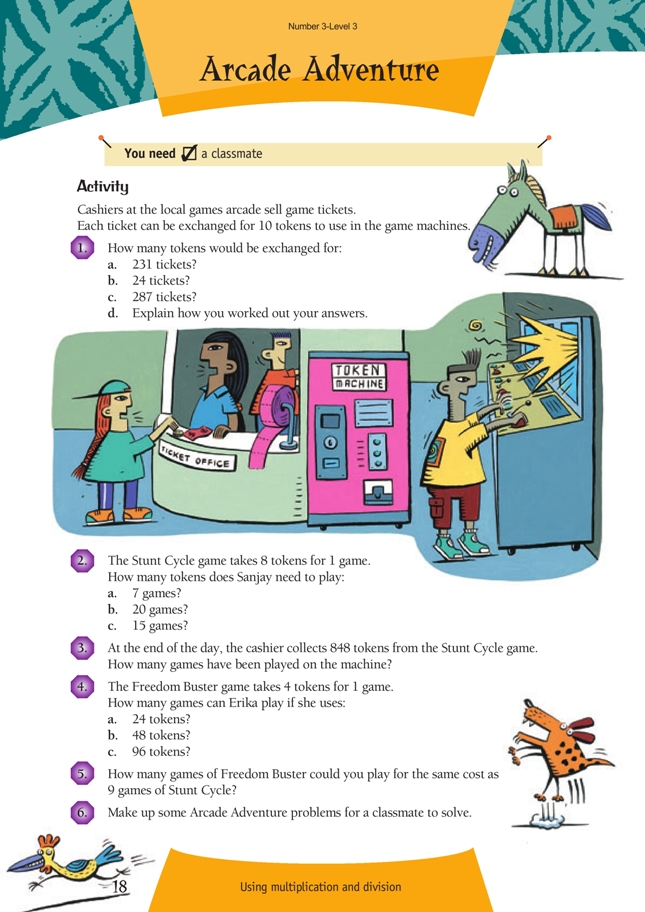This is a level 3 number activity from the Figure It Out series. It relates to Stage 6 of the Number Framework.
A PDF of the student activity is included.
Click on the image to enlarge it. Click again to close. Download PDF (236 KB)
solve problems involving mutliplication and division
A classmate
In order to do this activity, students should be able to solve simple division and multiplication problems, work with simple ratios, and be able to multiply and divide by 10, 4, and 8.
Before the students attempt this activity, remind them about place value columns and relationships. The students can also use toy money to find the number of tens in 400 or hundreds in 2 000. Questions 1a, b, and c require the students to multiply each number by 10. Encourage them to see that multiplying by 10 is a matter of shifting the digits one place to the left (that is, it is not a matter of shifting the decimal place). In question 1d, they are asked to explain their method(s). Ask them to share their methods with a classmate and then write down what they did.
In questions 2a, b, and c, the students need to multiply by 8. They should do this mentally rather than by using written algorithms. They can calculate 7 x 8 using their basic facts, think of 20 x 8 as 2 x 8 x 10, and think of 15 x 8 as 5 x 8 plus 10 x 8.
Question 3 requires division of a 3-digit figure by 8. Encourage the students to estimate the answer by rounding the number of tokens used in a game up to 10. Thus, 848 ÷ 10 = 84.8. This should show them that their actual answer will be more than 84. One way of working out the answer in their heads is to go 848 = 800 + 48. 800 ÷ 8 = 100, and 48 ÷ 8 = 6, so 848 ÷ 8 = 106.
For question 3, the students need to realise that they must work with division because the problem is the reverse of the previous questions. Some students may just carry on multiplying, not understanding the change of focus.
Question 5 compares two games. The ratio for Freedom Buster is 4 tokens per game (4:1), while the ratio for Stunt Cycle is 8 tokens per game (8:1). The students need to be able see the relationship between the ratios (4 is half of 8, so half the number of tokens is needed for 1 game of Freedom Buster) and then see how many games of Freedom Buster can be played for the same cost as 9 games of Stunt Cycle (twice as many, which is 18).
In question 6, the students are given the opportunity to make up their own problems. Before they share their problems with a classmate, they need to be able to work out the answers themselves. (This helps prevent the students from creating very large or complicated operations that are too difficult for others to solve.)
Further discussion and investigation
The students could undertake further exploration of ratios, such as doubling recipe quantities or investigating parent to student ratios for class trips.
Answers to Activity
1. a. 2 310 tokens
b. 240 tokens
c. 2 870 tokens
d. Explanations will vary, but they should be based on multiplying by 10. (You should
avoid saying “add a 0”: multiplying by 10 involves place value, with each digit moving
1 place to the left. For example, if you add a 0 to 24, you still get 24. If you multiply
24 by 10, you get 240.)
2. a. 56 tokens
b. 160 tokens
c. 120 tokens
3. 106 games
4. a. 6 games
b. 12 games
c. 24 games
5. 18 games (twice as many)
6. Practical activity
